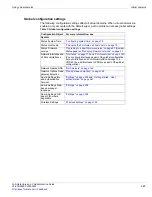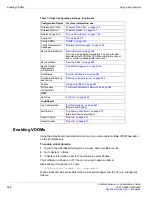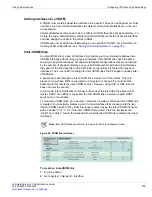
System Network
Interfaces
FortiGate Version 4.0 Administration Guide
01-400-89802-20090424
119
System Network
This section describes how to configure your FortiGate unit to operate in your network.
Basic network settings include configuring FortiGate interfaces and DNS settings. More
advanced configuration includes adding VLAN subinterfaces and zones to the FortiGate
network configuration.
If you enable virtual domains (VDOMs) on the FortiGate unit, you configure most system
network settings globally for the entire FortiGate unit. For example, all interface settings,
including adding interfaces to VDOMs, are part of the global configuration. However,
zones, the modem interface, and the Transparent mode routing table are configured
separately for each virtual domain. For details, see
“Using virtual domains” on page 103
This section describes:
•
•
•
Configuring the modem interface
•
Configuring Networking Options
•
•
Routing table (Transparent Mode)
•
•
•
Interfaces
In NAT/Route mode, go to
System > Network > Interface
to configure FortiGate interfaces.
You can:
•
modify the configuration of a physical interface
•
add and configure VLAN subinterfaces
•
aggregate several physical interfaces into an IEEE 802.3ad interface (models 300A,
400A, 500A, and 800 or higher)
•
combine physical interfaces into a redundant interface
•
add wireless interfaces (FortiWiFi models) and service set identifiers (SSIDs) (see
“Adding a wireless interface” on page 163
)
•
add and configure VDOM links (see
“Inter-VDOM links” on page 113
•
view loopback interfaces
Note:
Unless stated otherwise, the term interface can refer to either a physical FortiGate
interface or to a virtual FortiGate VLAN subinterface.
Note:
If you can enter both an IP address and a netmask in the same field, you can use the
short form of the netmask. For example, 192.168.1.100/255.255.255.0 can also be entered
as 192.168.1.100/24.
Summary of Contents for Gate 60D
Page 705: ...www fortinet com...
Page 706: ...www fortinet com...
































